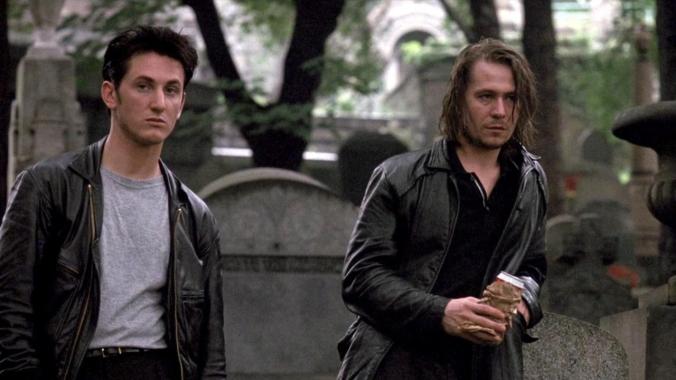In the event you don’t keep track of these things, the Los Angeles Dodgers lost the World Series last month, four games to one, to the Boston Red Sox. It was both the Dodgers’ second consecutive World Series appearance and defeat. From the point of view of many a long-suffering fan here in L.A., collapsing yet again mere inches from the finish line amounts to nothing more than another season-long strikeout, a yearlong exercise in futility, a squandered investment of time and emotional support. “This is where baseball breaks your heart,” someone said to me in the waning days of the season. To be sure, I share the sentiment: It’s hard as hell to get so frustratingly close to the Golden Ring only to go home empty-handed. A miss is as good as a mile, after all. Close only matters in horseshoes and hand grenades. “Almost” doesn’t count.
As recently as a few years ago, I wouldn’t have known, much less cared, who won or lost this Series—or even who played in it. I came to baseball relatively late in life—around forty—as I recounted in “Spring Fever,” the gist of which was this: For whatever reason, neither I nor any of my boyhood pals were born with the “sports gene.” We were all pop-culture fanatics, more likely to be found at the local comic shop than Little League field. When we saw the Bronx Bombers play the Indians at Yankee Stadium in 1986, none of us knew what the hell to make of that abstract experience; when we watched them face-off again in David S. Ward’s Major League in 1989, in the context of a Cinderella narrative, suddenly the rivalry had meaning. We loved movies and comics; sports we simply had no use for.
A few years later, I found myself formally studying comics (under legendary Batman artist and DC Comics editor Carmine Infantino) and cinema (in college) in preparation for making a career in those fields. What they don’t tell you in school, though, is that when you turn your passions into your profession, you often do so at the expense of the joy you once took in those pastimes. Worse still, so many of the things that directly inspired me to be a screenwriter, from Star Wars to superheroes, I eventually grew to disdain. And what Dodgers baseball restored in me, outside my conscious awareness as it was happening, was the innocent pleasure of being a fan of something again; it’s been a welcome, even analeptic, reprieve from the tyranny of passion.
The Dodgers’ reentry into the World Series this fall, and the collective hope it kindled of their first world-championship win in precisely three decades, coincided with a sobering anniversary of my own: It’s been exactly twenty years—October of 1998—since I signed with my first literary manager off a screenplay I’d written called BONE ORCHARD. It occurs to me only now, as I type this, that the project was something of a creative precursor to Escape from Rikers Island, trafficking in many of the same themes and concepts: an urban island left to rot and ruin, overrun with supernatural savages (demons, not zombies), with a neo–hardboiled detective at the center of the action. (I’d studied Raymond Chandler in college and have since been heavily influenced by his fiction.)
Anyway, there I was, twenty-two years old and only a few months out of school, and everything was unfolding right on schedule. The script would be taken to the spec marketplace and I would soon join the ranks of working screenwriters. You study for a career in the arts, and you get one—simple as that.
Christ, if only. BONE ORCHARD didn’t sell. And while I was halfway through writing my follow-up, the management company repping me shuttered. Young and naïve though I was, I nonetheless intuited I wasn’t likely to move the needle on my screenwriting career in New York—an ambition I was resolute about fulfilling—so I left the comforts of home behind for Los Angeles.
When you first arrive in Hollywood, good luck getting anyone with even a modicum of clout to give you the time of day. Not gonna happen. What you do—and what I did—is seek out aspiring filmmakers at the same level and pool resources. In addition to screenwriting, I’d had experience as a film and video editor, so I started cutting USC thesis shorts pro bono. Within a year or two, I’d established a circle of friends and colleagues, all in our twenties, who were collaborating on “portfolio projects.” I was editing by day and writing by night, hoping to network my way to new representation—an objective that would, to my slowly percolating astonishment, take another half-dozen years to realize.








Recent Comments